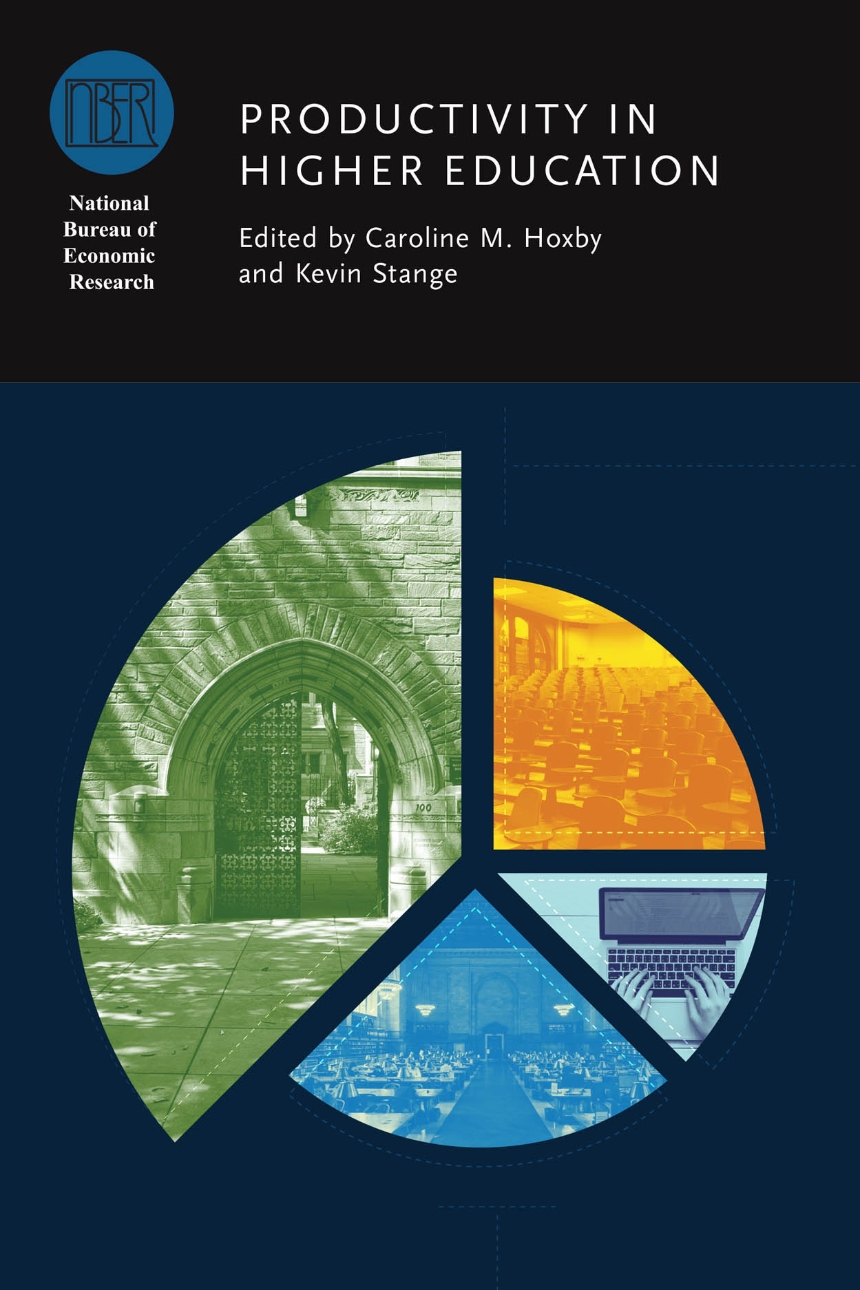Productivity in Higher Education
How do the benefits of higher education compare with its costs, and how does this comparison vary across individuals and institutions? These questions are fundamental to quantifying the productivity of the education sector. The studies in Productivity in Higher Education use rich and novel administrative data, modern econometric methods, and careful institutional analysis to explore productivity issues. The authors examine the returns to undergraduate education, differences in costs by major, the productivity of for-profit schools, the productivity of various types of faculty and of outcomes, the effects of online education on the higher education market, and the ways in which the productivity of different institutions responds to market forces. The analyses recognize five key challenges to assessing productivity in higher education: the potential for multiple student outcomes in terms of skills, earnings, invention, and employment; the fact that colleges and universities are “multiproduct” firms that conduct varied activities across many domains; the fact that students select which school to attend based in part on their aptitude; the difficulty of attributing outcomes to individual institutions when students attend more than one; and the possibility that some of the benefits of higher education may arise from the system as a whole rather than from a single institution. The findings and the approaches illustrated can facilitate decision-making processes in higher education.
392 pages | 96 line drawings, 72 tables | 6 x 9 | © 2019
National Bureau of Economic Research Conference Report
Economics and Business: Business--Industry and Labor, Economics--Development, Growth, Planning
Education: Education--Economics, Law, Politics, Higher Education
Reviews
Table of Contents
Acknowledgments
Introduction
Caroline M. Hoxby and Kevin Stange
1. What Health Care Teaches Us about Measuring Productivity in Higher Education
Douglas Staiger
2. The Productivity of US Postsecondary Institutions
Caroline M. Hoxby
3. Labor Market Outcomes and Postsecondary Accountability: Are Imperfect Metrics Better Than None?
Veronica Minaya and Judith Scott-Clayton
4. Learning and Earning: An Approximation to College Value Added in Two Dimensions
Evan Riehl, Juan E. Saavedra, and Miguel Urquiola
5. The Costs of and Net Returns to College Major
Joseph G. Altonji and Seth D. Zimmerman
6. Faculty Deployment in Research Universities
Paul N. Courant and Sarah Turner
7. Measuring Instructor Effectiveness in Higher Education
Pieter De Vlieger, Brian Jacob, and Kevin Stange
8. The Competitive Effects of Online Education
David J. Deming, Michael Lovenheim, and Richard Patterson
9. Estimating the Productivity of Community Colleges in Paving the Road to Four-Year College Success
Scott E. Carrell and Michal Kurlaender
Contributors
Author Index
Subject Index
Introduction
Caroline M. Hoxby and Kevin Stange
1. What Health Care Teaches Us about Measuring Productivity in Higher Education
Douglas Staiger
2. The Productivity of US Postsecondary Institutions
Caroline M. Hoxby
3. Labor Market Outcomes and Postsecondary Accountability: Are Imperfect Metrics Better Than None?
Veronica Minaya and Judith Scott-Clayton
4. Learning and Earning: An Approximation to College Value Added in Two Dimensions
Evan Riehl, Juan E. Saavedra, and Miguel Urquiola
5. The Costs of and Net Returns to College Major
Joseph G. Altonji and Seth D. Zimmerman
6. Faculty Deployment in Research Universities
Paul N. Courant and Sarah Turner
7. Measuring Instructor Effectiveness in Higher Education
Pieter De Vlieger, Brian Jacob, and Kevin Stange
8. The Competitive Effects of Online Education
David J. Deming, Michael Lovenheim, and Richard Patterson
9. Estimating the Productivity of Community Colleges in Paving the Road to Four-Year College Success
Scott E. Carrell and Michal Kurlaender
Contributors
Author Index
Subject Index
